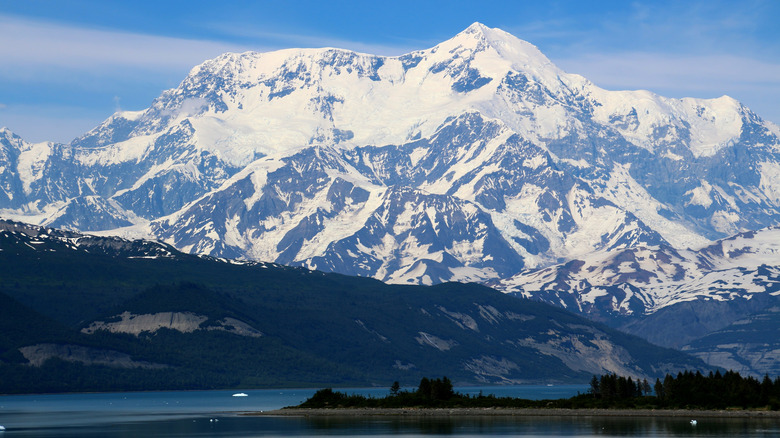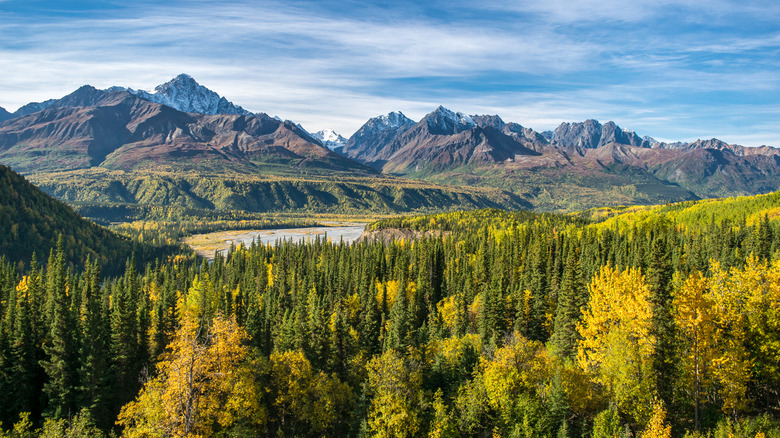North America's 'Man Eater' Is A Massive US Mountain With Overwhelmingly Beautiful Views
Mountaineers looking for a bit of forbidden fruit often head to Alaska's Mount St. Elias, a peak so fierce, it's called North America's "Man Eater." The massive mountain's reputation for hellish weather and dramatic vertical ascent makes it all but unnavigable for mere humans. So if you want to scale a mountain, you're better off choosing one like Mount Monadnock in New Hampshire, one of the most hiked mountains in the world. But like all dangerous things, Mount St. Elias contains a special, overwhelming beauty one must witness firsthand to fully appreciate.
At 18,000 feet, Class 1 Mount St. Elias is the second-tallest mountain in the US and Canada (it's the fourth-tallest in North America), located right on the border between Alaska and the Yukon Territory. Its imposing summit creates awe-inspiring views above neighboring Icy Bay, within the Wrangell-St. Elias National Park and Preserve. The mountain's surface may not treat people kindly, but wildlife, from caribou to goats, easily roam its sides.
The Tlingit tribe considers Mount St. Elias sacred, making it part of its lore and history. The people also use it as a forecasting device, predicting the coming weather based on the cloud formations surrounding it. Those same weathervanes decorate the mountain and fuel its reputation for overwhelming beauty.
Enjoy Mount St. Elias's gorgeous views, but don't climb it
Visitors typically spend most of their time looking at the gorgeous mountain and snapping photos of the surrounding fjords and glaciers. Local businesses offer fishing charters or tours, and backcountry hiking, rafting, and mountaineering are all available in Wrangell-St. Elias National Park and Preserve. Those interested in the fastest way down will be happy to know the mountain also lays claim to having the longest vertical ski run in the world.
Most mountaineers can only dream of reaching the summit; just over 50 people have accomplished the feat because of the long distance to its base, steep incline, and oppressive weather. An attempted climb would last about three weeks, but don't risk it; there's no high-altitude rescue team ready to bring you back home if you go missing. But all of these factors also make it a visual stunner.
Planning your visit to this remote part of Alaska will require some homework. Ted Stevens Anchorage International Airport is your closest connection by air, located about 234 miles away from Wrangell-St. Elias National Park and Preserve. The park includes cabins for overnight stays, as well as camping areas. The weather can be oppressive during winter, with temperatures significantly below freezing (though not as frigid as the temperatures you'll find on New Hampshire's deadly Mount Washington). It's better to aim for a summer visit; temperatures are still cool but won't induce frostbite. The weather at this time of year is unpredictable but somewhat easier to handle. Bring layered clothing, rugged boots, a first aid kit, and a compass.

